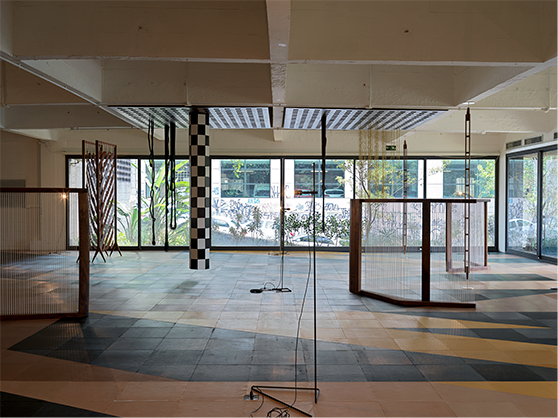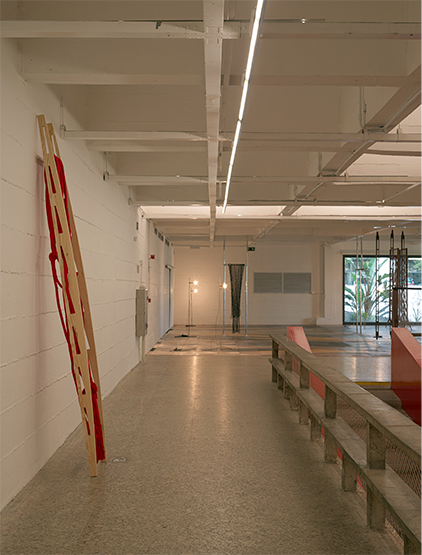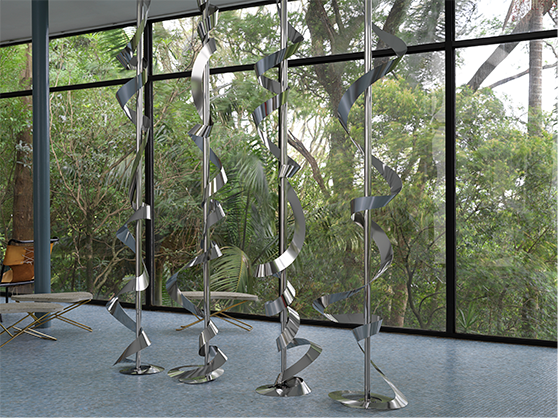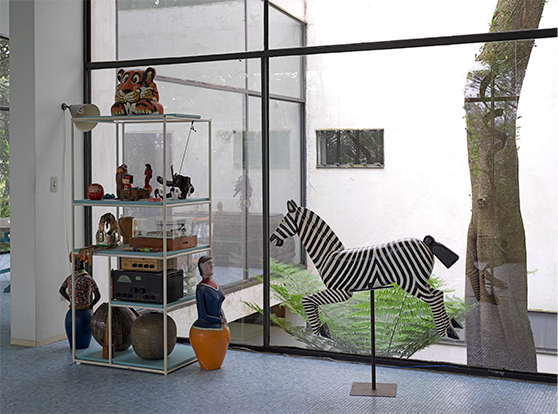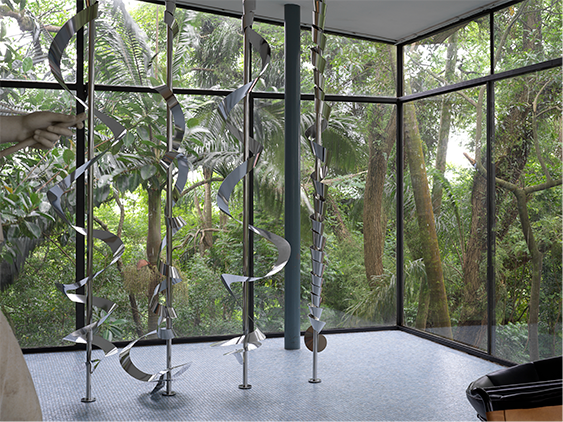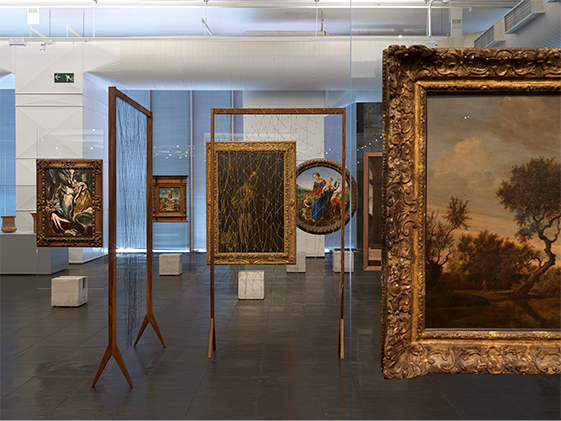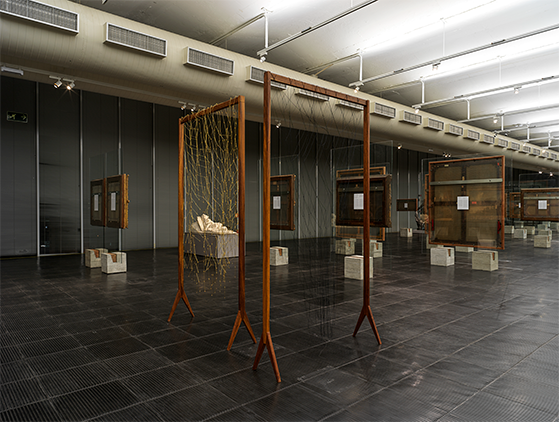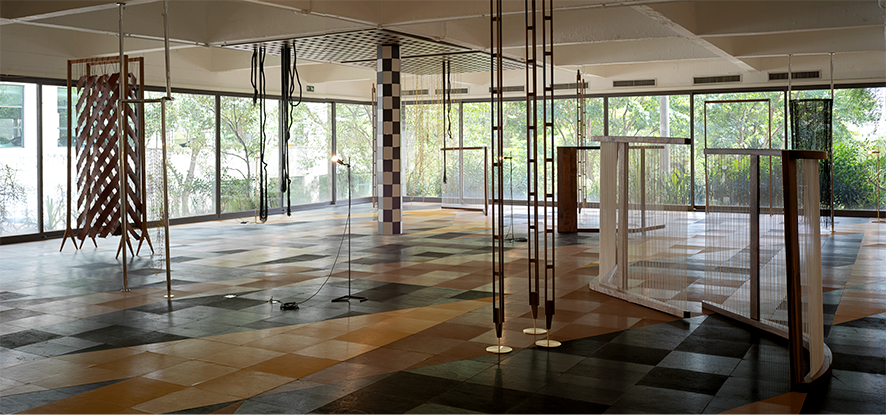MASP
12.13.2019-4.12.2020
CASA DE VIDRO [GLASS HOUSE]
12.14.2019-4.11.2020
Defined by the artist herself as “sculptures created in space,” the works by Leonor Antunes (Lisbon, Portugal, 1972) establish relationships between sculpture, architecture, design, light and the body – that of the spectator moving through the gallery or space that the artist occupies. Atunes gives special attention to the materials she uses, which are often natural or organic, and to the effects left on them by time and their use, highlighting lines and weaves, techniques and textures. One of the most striking features of her practice is the interest she takes in the productions of a number 20th-century artists, architects and designers, whom she investigates and is inspired by. In this sense, she constructs a true archive of references, composed above all by pioneering women modernists who have often been left outside the grand narratives of art history, and who emerge as characters in Atunes’s work: Anni Albers, Charlotte Perriand, Clara Porset, Egle Trincanato, Eileen Grey, Eva Hesse, Franca Helg, Gego, Lina Bo Bardi, Lygia Clark and Ruth Asawa, among others.
A key figure in this archive is Bo Bardi, the architect of the MASP building, which is herself the starting point for this exhibition project, extending also to the Casa de Vidro [Glass House], the architect’s iconic residence in São Paulo’s Morumbi district. Other characters are also featured here – Porset, Clark and Franco Albini, the latter of whom was an important reference for Bo Bardi. The exhibition’s title is an allusion to her spaces and to the attention the Italian-Brazilian architect gave to “joints, voids, and gaps.” Besides these, two common threads in the show are verticality and transparence. Thus, in the work villa neufer, a sculpture is made on the basis of a ladder by Albini. Caipiras, capiau, pau a pique refers to elements used in the famous show of the same name organized by Bo Bardi at Sesc Pompeia in 1980. On the floor of the gallery at MASP, a work borrows its geometric composition from a painting by Clark (Superfície modulada, 1952), enlarged on an architectural scale, allowing the spectator to actively enter the work, thus anticipating a path that Clark would investigate in the following decade, with the viewer’s participation in her famous Bichos. For its part, the wooden latticework on the ceiling, inspired by a detail of Porset’s house in Mexico City, occupies two concrete niches in the gallery, mixing two characters: Porset and Bo Bardi. The interplay of transparencies is articulated through the net that spans through the gallery, as well as by the glass that divides the building’s exterior and interior.
Joints, voids and gaps connects different characters and makes them present in a single space: here, the interaction between art and architecture valorizes know-hows from different times, techniques and languages, whether they be industrial or artisanal, authorial or anonymous.
CURATED BY Adriano Pedrosa, Artistic Director, MASP; Amanda Carneiro, Assistent Curator, MASP.





